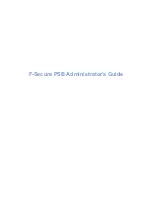
A V G A nti- V irus 2 0 1 1 © 2 0 1 0 C opyright A V G T ec hnologies C Z, s .r.o. A ll rights res erved.
5 1
In the
E-mail Scanner detection
dialog (
accessible via system menu option History /
E-mail Scanner detection
) you will be able to see a list of all findings detected by the
E-mail Scanner
component. For each detected object the following information is
provided:
·
Infection
- description (possibly even name) of the detected object
·
Object
- object location
·
Result
- action performed with the detected object
·
Detection time
- date and time the suspicious object was detected
·
Object Type
- type of the detected object
In the bottom part of the dialog, under the list, you will find information on total
number of detected objects listed above. Further you can export the entire list of
detected objects in a file (
Export list to file
) and delete all entries on detected
objects (
Empty list
).
Control buttons
The control buttons available within the
E-mail Scanner detection
interface are as
follows:
·
Refresh list
- updates the list of detected threats
·
Back
- switches you back to the previously displayed dialog
7.8. Update Manager
7.8.1. Update Manager Principles
No security software can guarantee true protection from various types of threats
unless it is regularly updated! Virus writers are always looking for new flaws that they
can exploit in both software and operating systems. New viruses, new malware, new
hacking attacks appear daily. For this reason, software vendors are continually issuing
updates and security patches, to fix any security holes that are discovered.
It is crucial to update your AVG regularly!
The
Update Manager
helps you to control regular updating. Within this component
you can schedule automatic downloads of update files either from the Internet, or the
local network. Essential virus definition updates should be daily if possible. Less urgent
program updates can be weekly.
Note:
Please pay attention to the
AVG Updates
chapter for more information on
update types and levels!
















































